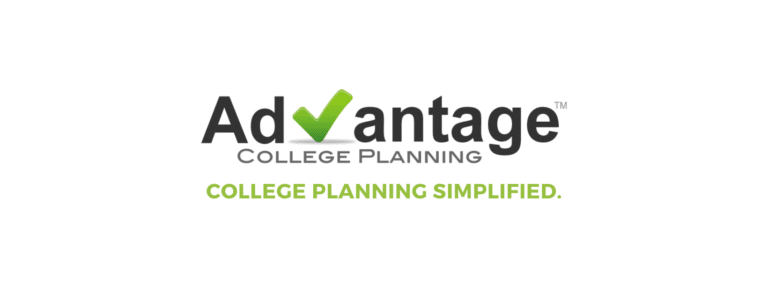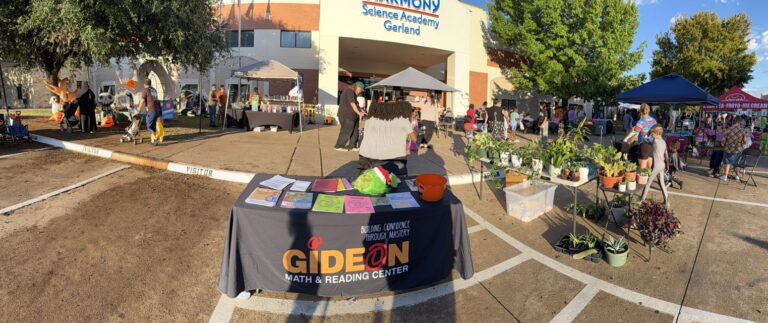How Profitable is an Oil Change Station?

As of 2024, there were approximately 10,000 oil change stations in the United States, representing a total market size of $8 billion. But how profitable are oil change businesses? How much investment is required to start one? And what is the average turnover for an oil change station?
In this study, we analyze the financial data from over 6,900 real oil change stations in the United States to provide you with accurate, up-to-date answers to these questions.
The data, sourced from 2024, includes revenue, costs, and profit data from some of the largest 5 oil change franchises in the US, representing a total of 6,900 oil change stations.
Whether you’re considering starting your own oil change business or seeking to understand the financial dynamics of the industry, this article offers a detailed look at the key factors that influence profitability.
We’ll be exploring several key questions:
- How Much Revenue Does an Oil Change Business Make?
- How Much Does It Cost to Start an Oil Change Company?
- How Profitable Is an Oil Change Company?
How Much Revenue Does an Oil Change Business Make?
Based on data from over 6,900 franchised stations, an oil change business earns an average of $1,006,000 in gross revenue per year. However, it’s important to note that revenue can vary significantly among different oil change stations.
Several factors contribute to these variations, with location being a primary determinant. High-traffic areas, regions with a higher density of vehicles, and proximity to complementary businesses can all impact the revenue of an individual station.
The data below offers a detailed overview of the average yearly revenue for each franchise, providing valuable insights for potential investors and entrepreneurs about the financial potential within the oil change industry.
| Franchise | Average Yearly Revenue ($) |
|---|---|
| AAMCO Transmission | 888,000 |
| Costa Oil | 221,000 |
| Express Oil Change & Tire Engineers | 1,842,000 |
| Grease Monkey | 1,167,000 |
| Jiffy Lube | 941,000 |
| Midas | 1,080,000 |
| SpeeDee Oil Change & Tune Up | 1,321,000 |
| Strickland Brothers 10 Minute Oil Change | 667,000 |
| Take 5 Oil Change | 1,285,000 |
| Valvoline Instant Oil Change | 1,420,000 |
| Victory Lane Quick Oil Change | 582,000 |
| Kwik Kar | 658,000 |
How Much Does It Cost to Start an Oil Change Company?
Starting an oil change station involves significant financial investment, which can vary widely depending on the franchise.
The initial costs include expenses such as equipment, facility setup, licensing, and initial inventory. Understanding these costs is crucial for potential investors and entrepreneurs to make informed decisions.
The table below presents the low and high-end investment costs required to start an oil change station for various franchises.
These figures provide a comprehensive overview of the financial commitment needed to enter the oil change industry, highlighting the range of investment required for different franchise options.
Case study: real data from 6,900 oil change franchises
The following table presents the low and high-end investment costs required to start an oil change station for various franchises:
| Franchise | Low End Investment ($) | High End Investment ($) |
|---|---|---|
| AAMCO Transmission | 235,000 | 353,000 |
| Costa Oil | 156,000 | 1,875,000 |
| Express Oil Change & Tire Engineers | 2,562,000 | 3,815,000 |
| Grease Monkey | 252,000 | 821,000 |
| Jiffy Lube | 232,000 | 443,000 |
| Midas | 104,000 | 1,043,000 |
| SpeeDee Oil Change & Tune Up | 272,000 | 872,000 |
| Strickland Brothers 10 Minute Oil Change | 218,000 | 1,933,000 |
| Take 5 Oil Change | 223,000 | 1,617,000 |
| Valvoline Instant Oil Change | 205,000 | 396,000 |
| Victory Lane Quick Oil Change | 235,000 | 695,000 |
| Kwik Kar | 255,000 | 821,000 |
Oil Change Startup Costs
Starting an oil change business involves several key expenses. Here is a breakdown of the main costs you can expect:
- Real Estate Costs: Costs for leasing or purchasing a suitable location and security deposits.
- Facility Construction and Renovation: Costs for constructing a new facility or renovating an existing one.
- Equipment and Fixtures: Necessary machinery, office furniture, and branding signs.
- Initial Inventory: A stock of various oils, lubricants, filters, and other consumables.
- Licensing and Permits: Fees for obtaining necessary business licenses, permits, and certifications.
- Marketing and Advertising: Costs for promoting the grand opening and ongoing advertising efforts.
- Insurance: Coverage for accidents, liabilities, property damage, and employee injuries.
- Training Expenses: Costs for training yourself and your staff, including travel, lodging, and materials.
- Working Capital: Funds to cover operational expenses during the initial phase until the business becomes profitable.
- Professional Fees: Fees for legal, accounting, and consulting services.
The detailed breakdown and table provide a comprehensive overview of the financial requirements to start an oil change business, ensuring proper planning and budgeting.
| Expense | Range | Explanation |
|---|---|---|
| Real Estate Costs | $5,000 to $20,000/month (lease) or $300,000 to $1,200,000 (purchase) | Varies based on location, property size, and whether you lease or purchase. |
| Security Deposit | $5,000 to $40,000 | Based on the monthly rent and terms negotiated with the landlord. |
| Facility Construction and Renovation | $100,000 to $500,000 | Lower end for minor renovations; higher end for new construction or major remodels. |
| Equipment and Fixtures | $100,000 to $300,000 | Lower end for basic setups; higher end for comprehensive, high-end equipment. |
| Office and Waiting Area Fixtures | $10,000 to $30,000 | Basic office setup at the lower end; fully equipped waiting area at the higher end. |
| Signage | $5,000 to $20,000 | Simple signs at the lower end; extensive branding and high-quality materials at the higher end. |
| Initial Inventory | $20,000 to $50,000 | Lower end for initial stock; higher end for a comprehensive range of products. |
| Licensing and Permits | $1,000 to $10,000 | Varies based on local regulations and specific business requirements. |
| Marketing and Advertising | $10,000 to $30,000 | Basic local advertising at the lower end; extensive marketing campaigns at the higher end. |
| Ongoing Marketing | $2,000 to $10,000/month | Consistent advertising efforts to maintain and grow the customer base. |
| Insurance | $5,000 to $15,000/year | Basic coverage at the lower end; comprehensive coverage at the higher end. |
| Property Insurance | $2,000 to $10,000/year | Based on property value and coverage requirements. |
| Workers’ Compensation | $1,000 to $5,000/year | Varies based on the number of employees and local regulations. |
| Training Expenses | $1,000 to $5,000 | Basic training at the lower end; extensive training programs at the higher end. |
| Working Capital | $20,000 to $50,000 | Funds to cover initial operating expenses until the business becomes profitable. |
| Professional Fees | $5,000 to $20,000 | Legal, accounting, and consulting fees, varying based on complexity and requirements. |
| Total | $300,000 – $1,200,000 |
How Profitable Is an Oil Change Company?
Here is a detailed table showing the gross profit margin, labor costs percentage, and EBITDA margin percentage for various oil change franchises.
| Franchise | Gross Profit Margin (%) | Labor Costs (%) | EBITDA Margin (%) |
|---|---|---|---|
| AAMCO Transmission | 75.3% | 23.2% | 18.7% |
| Costa Oil | 77.6% | 37.1% | 19.3% |
| Express Oil Change & Tire Engineers | N/A | N/A | N/A |
| Grease Monkey | 71.7% | 31.8% | 20.3% |
| Jiffy Lube | N/A | N/A | N/A |
| Midas | 71.6% | 30.6% | 11.2% |
| SpeeDee Oil Change & Tune Up | 71.1% | 29.8% | 17.1% |
| Strickland Brothers 10 Minute Oil Change | 72.6% | 15.0% | 28.5% |
| Take 5 Oil Change | 72.6% | 21.2% | 27.1% |
| Valvoline Instant Oil Change | 69.6% | 28.9% | 15.6% |
| Victory Lane Quick Oil Change | N/A | N/A | N/A |
| Kwik Kar | 76.8% | 42.9% | 16.6% |
Oil Change Operating costs
Running an oil change business involves various operating costs that need to be carefully managed to ensure profitability. Here are the primary operating expenses you can expect:
Labor Costs
These include salaries and wages for technicians, managers, and administrative staff, as well as employee benefits such as health insurance and retirement plans. Additionally, you will need to account for payroll taxes and workers’ compensation insurance.
Rent or Mortgage Payments
If you are renting your business location, you will have monthly lease payments. If you own the property, you will have mortgage payments instead.
Utilities
Regular utility expenses include electricity, water and sewage, heating and cooling, and internet and phone services. These are essential for the daily operation of your business.
Inventory and Supplies
This covers the cost of motor oils and lubricants, filters (oil, air, fuel), wiper blades, cleaning supplies, and maintenance tools and equipment.
Insurance
You will need several types of insurance, including general liability, property, workers’ compensation, and vehicle insurance (if applicable). These protect your business against various risks.
Marketing and Advertising
To attract and retain customers, you will need to invest in local advertising (print, radio, online), social media marketing, promotions, discounts, and physical signage and banners.
Maintenance and Repairs
Regular maintenance and repairs are necessary to keep your facility and equipment in good working condition. This includes building maintenance (plumbing, electrical, HVAC) and groundskeeping.
Administrative Costs
These costs include office supplies, accounting and bookkeeping services, legal fees, and software and subscription services needed for smooth business operations.
Licensing and Permits
Your business will need to renew various licenses and permits regularly. Compliance with environmental regulations and safety inspections also incurs costs.
Technology Costs
Investments in technology include point-of-sale (POS) systems, computer hardware and software, and security systems like cameras and alarms to ensure efficient and secure operations.
Miscellaneous Expenses
These include uniforms for employees, training and development programs, and customer service amenities such as coffee, magazines, and Wi-Fi to enhance the customer experience.
Case Study: Grease Monkey
Here is a detailed table showing the profit margins for franchisee-owned Grease Monkey centers based on different sales categories for fiscal year 2023:
| Category | Average Net Sales ($) | Gross Profit Margin (%) | EBITDAR Margin (%) | Salaries, Wages, and Benefits (%) | Retail Operating Expenses (%) | Office and G&A Expenses (%) |
|---|---|---|---|---|---|---|
| A (Less than $400,000) | 364,093 | 66.3 | -10.8 | 55.8 | 13.8 | 7.4 |
| B ($400,001 – $600,000) | 523,963 | 72.4 | 4.9 | 42.8 | 10.7 | 13.9 |
| C ($600,001 – $800,000) | 702,644 | 71.4 | 12.9 | 36.1 | 12.9 | 9.5 |
| D ($800,001 – $1,000,000) | 884,098 | 70.7 | 16.2 | 33.7 | 10.3 | 10.6 |
| E (Greater than $1,000,000) | 1,487,022 | 72.6 | 24.5 | 29.8 | 9.7 | 8.6 |
Gross Profit Margin remains relatively stable across all categories, hovering around 70% to 73%, indicating consistent cost management relative to sales.
EBITDAR Margin shows significant improvement as sales increase, ranging from -10.8% in the lowest sales category to 24.5% in the highest. This suggests economies of scale and better absorption of fixed costs at higher sales volumes.
Salaries, Wages, and Benefits decrease as a percentage of sales in higher categories, reflecting improved labor efficiency.
Retail Operating Expenses and Office and G&A Expenses also show a declining trend as a percentage of sales in higher categories, indicating better cost control and operational efficiencies.






